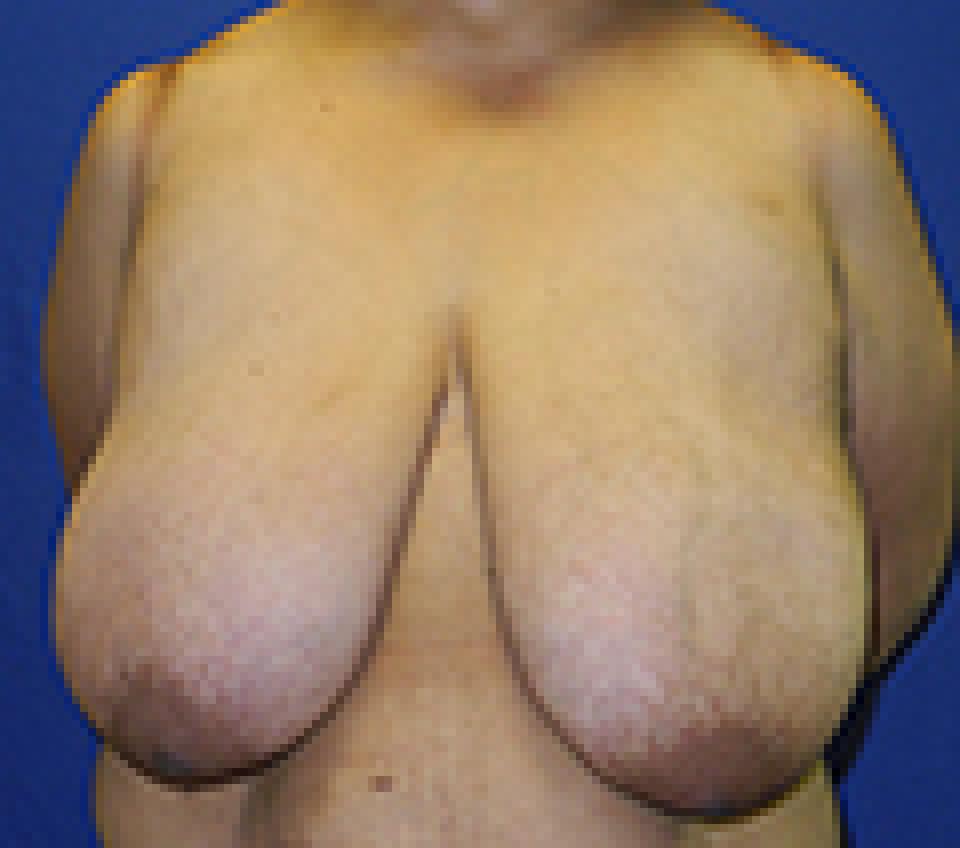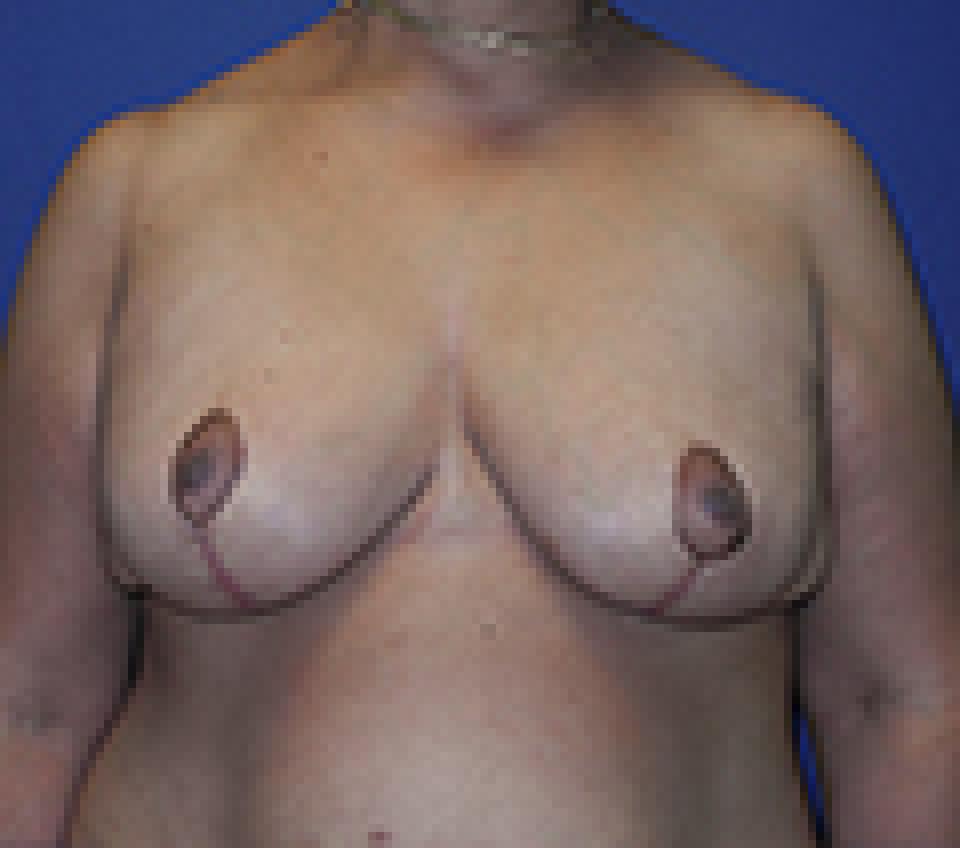Excess Skin
“Excess” is a judgement, implying more than the subject wishes, and may be anywhere from indistinguishable to gross. The surgical techniques will vary only in quantity removed.
Although “drooping” of body parts and stretching of skin is accepted (albeit reluctantly) as a normal concomitant of the aging process, recent medical advances have produced a whole new “unintended consequence” of weight reduction procedures.
Obesity is the new form of malnutrition, not yet at epidemic levels perhaps, but certainly endemic. The subject may lose weight by the very difficult self-denial of food, or by bariatric surgery. This removes the fat from the body, but does not remove the envelope that once contained it, and the skin now hangs in folds which may not bother an elephant but is of concern to most people who do not esteem the shiazu look. This is no longer the supple, elastic, “bounce back” skin of the young person, but has become an inelastic loose substance, and when it is a result of severe weight loss, it encompasses the whole body, limbs as well as torso, and probably also the face.
The issue is not merely a question of being unsightly; the overhanging folds of skin result in abnormal moisture and aggregation of superficial infection, intertrigo, and pose, no matter how scrupulous the subject, difficulty in hygiene. (S)he is left with no remedial choice other than surgical excision of the excess skin.
Although the need for surgery may be obvious, timing is of great concern. The procedures in general should not commence until two years after the weight loss program started nor less than one year after weight has stabilized, by which time what natural reduction in skin substance that might occur has already happened.
The risk to the patient lies less in the surgery than in general health. Many excessively (morbidly) obese persons suffer from the metabolic syndrome, a combination of conditions such as high blood pressure, coronary artery disease and Type 2 diabetes. Their medical status must be brought as close to normal as possible and full attention given to it by anesthesiologist and surgeon; the co-operation of an internist specialising in this field might be sought. Many surgeons will require that the patient no longer uses tobacco.
Among the issues for the patient to understand before making his decision: realistic expectations of surgery, understanding there will be several procedures, each of which leaves a scar and all of which are likely to be followed by a period of depression; (s)he must also know whether medical insurance will pay for what they may term “cosmetic” procedures.
Among the procedures that might be involved are: panniculectomy; “tummy tuck” (abdominoplasty); ventral hernia repair (herniorrhaphy); belt lipectomy (body lift); breast lift (mastopexy) and/or reduction; skin removed from arms (brachioplasty); face lift.
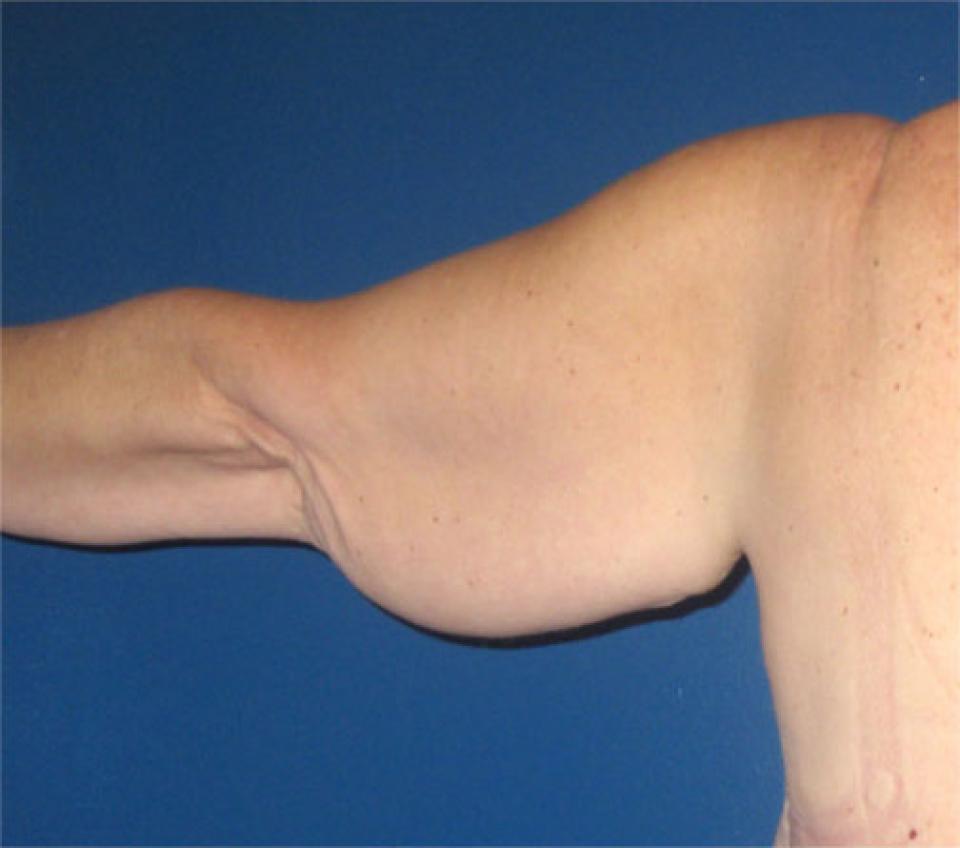 before
before
 after
after
This case depicts a 55 year old woman who after losing almost 100 pounds had developed sagging skin in the upper arms. Because of the significant skin excess that remained after such dramatic weight loss, liposuction alone was not possible as a method of arm contouring.
Although this procedure involves an incision beginning in the arm pit or axilla and extending down toward the elbow, the results allow individuals to fit into items of clothing in which they could not prior to their surgery.
The post-operative photographs depict this woman's appearance approximately six months after surgery.
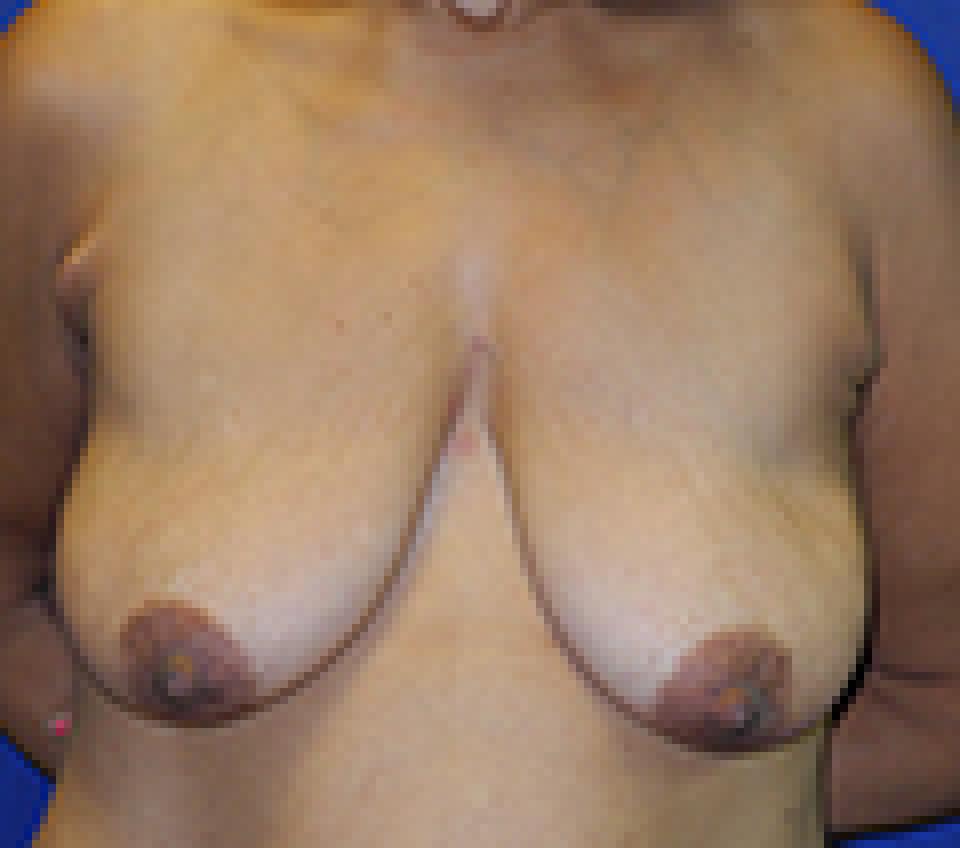 before
before
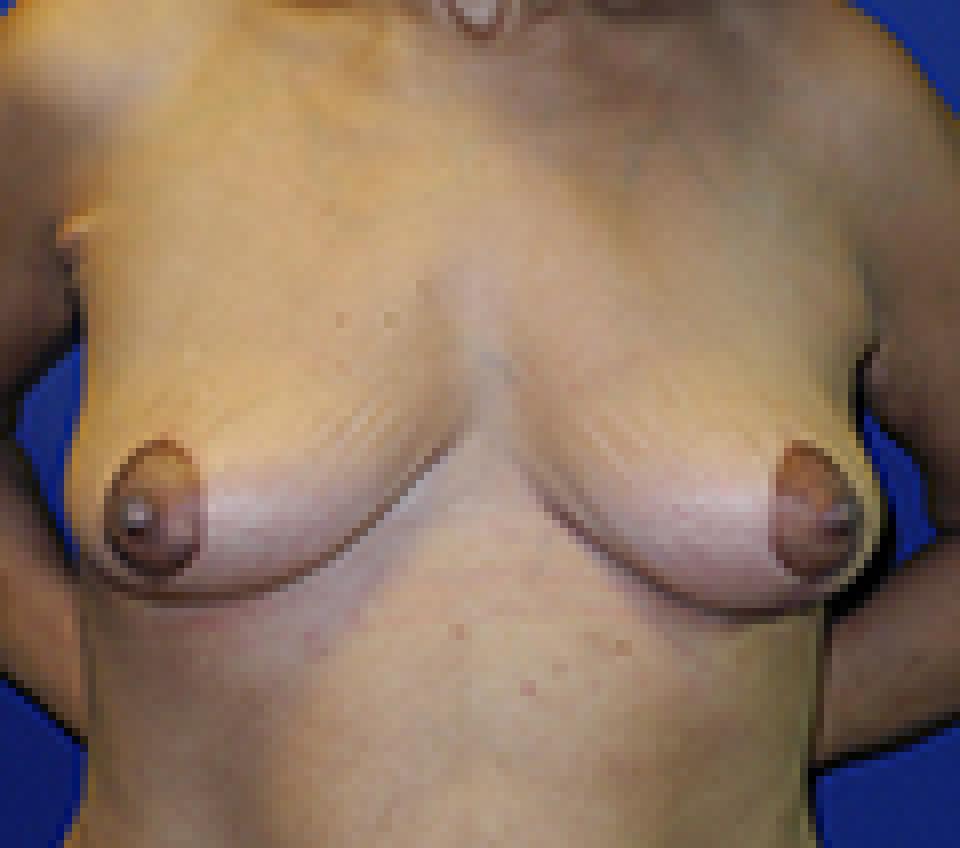 after
after
This 49 year old woman reached her plateau weight after losing 100 pounds following bariatric surgery. She is an excellent example of an individual whose breast tissue had been largely replaced with fat and as such, after massive weight loss, there was not enough breast tissue remaining to rearrange into a new breast shape that appeared typical of what one might expect after a breast lift or mastopexy.
From an aesthetic standpoint, this woman informed me that she would be satisfied with any improvement in her breast shape. Her primary goal, however, was to remove the extra skin that otherwise laid across her abdomen unless she wore an underwire bra. Her skin had lost a great deal of its elasticity and was unlikely to tolerate insertion of an implant to replace lost volume without sagging or becoming ptotic in a relatively short period of time. The use of commercially available skin substitutes, which would have allowed use of an implant, was not an option for her.
Her post surgical photographs show her result after I performed a breast lift or mastopexy using a short scar technique that leaves behind scars in the shape of a “lollipop.”
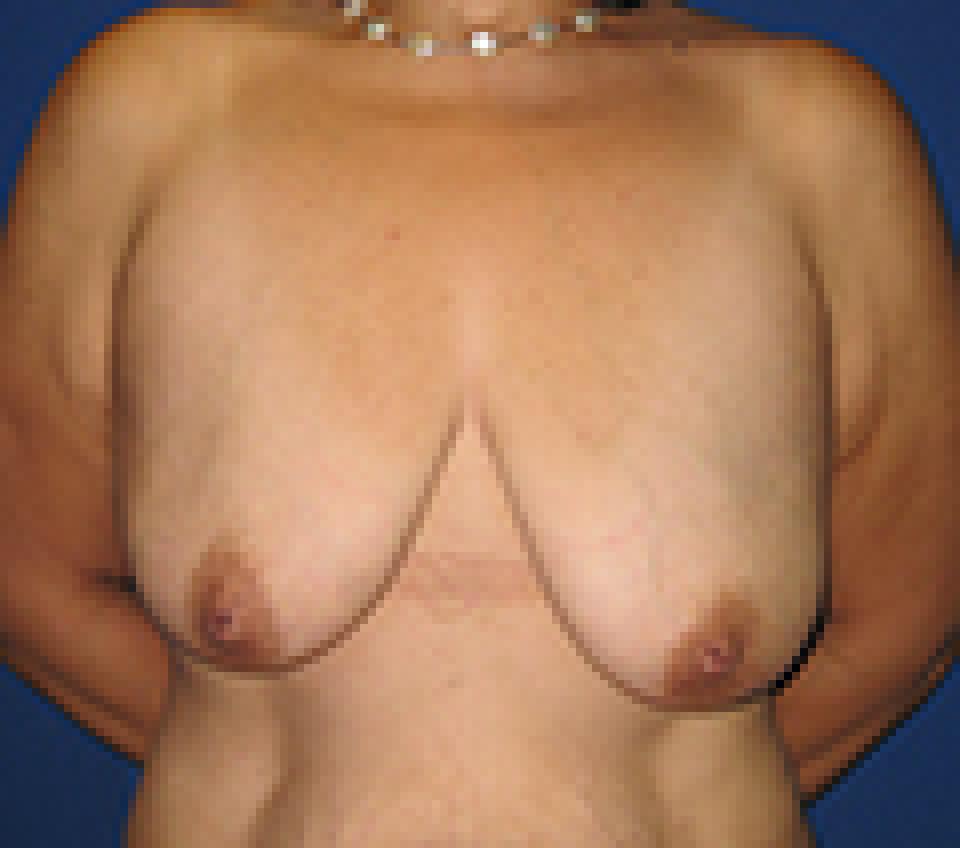 before
before
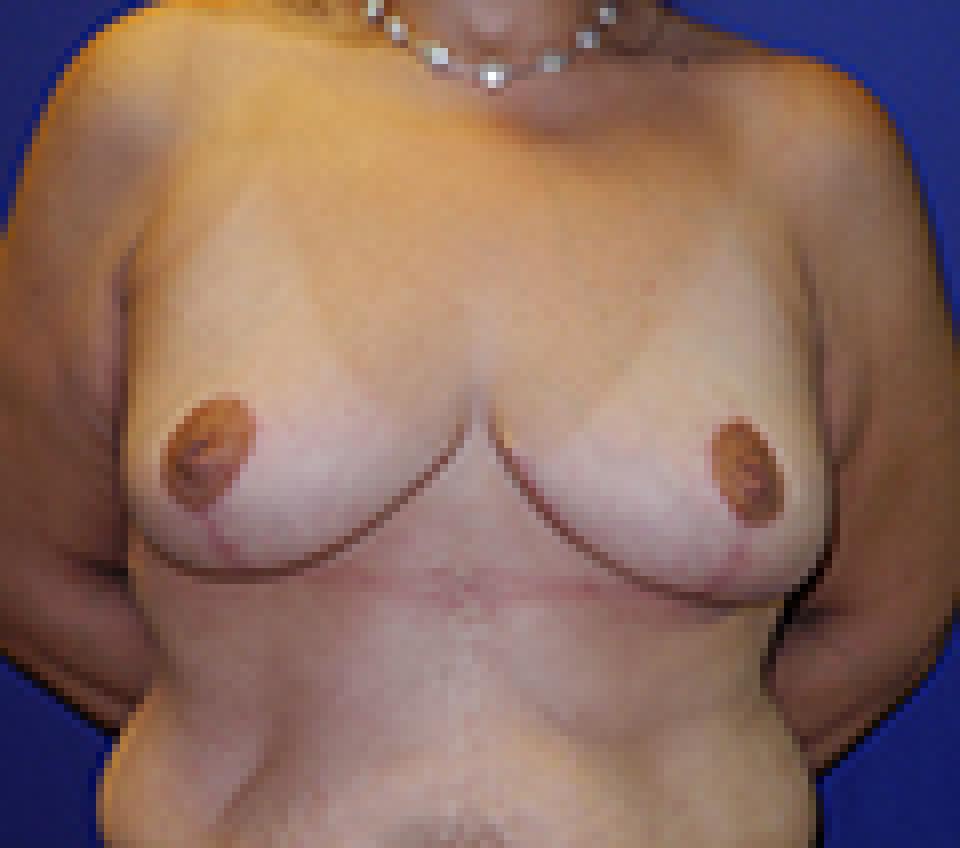 after
after
This 37 year old woman reached her plateau weight after losing 91 pounds following bariatric surgery. She had a breast lift or mastopexy using a technique which leaves behind scars in the shape of an “anchor.”
A breast lift or mastopexy is an operation which rearranges breast tissue so that the new breast shape is typically shorter and rounder. Unfortunately, patients who have lost a large amount of weight often do not have enough breast tissue remaining to rearrange into a naturally appearing breast. This woman was fortunate to have enough breast tissue after a 90 pound weight loss to achieve the breast shape that is visible in her post surgery photographs.
While an implant can provide the volume that is lacking after massive weight loss, the weight of the implant can also be very taxing on compromised skin, such as that which is typical after massive weight loss. Commercially available skin substitutes can provide the strength needed for successful use of implants in such cases.
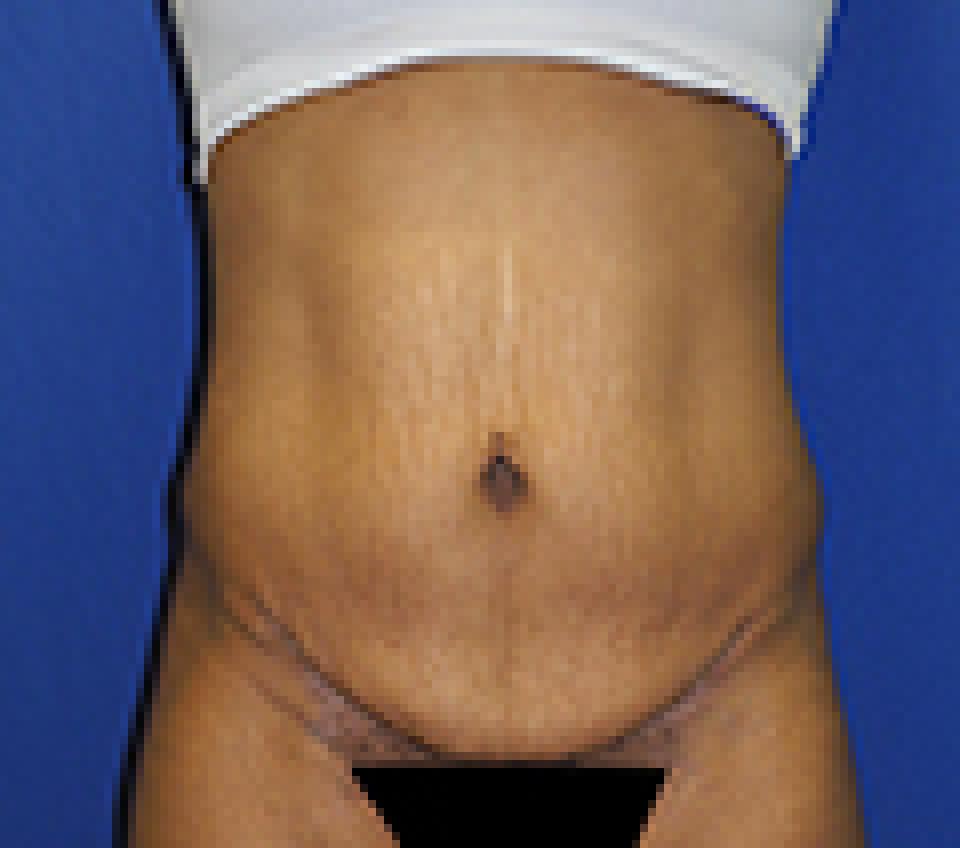 before
before
 after
after
This 33 year old woman embarked upon a diet and exercise program that resulted in a 100 pounds weight loss over a 10 month period. Significant changes in her body's appearance occured, but because there is a limit to how much an individual's skin can shrink down to a smaller contour, some issues remained.
These types of issues are ideally adressed by performing an abdominoplasty along with tailored liposuction.
 before
before
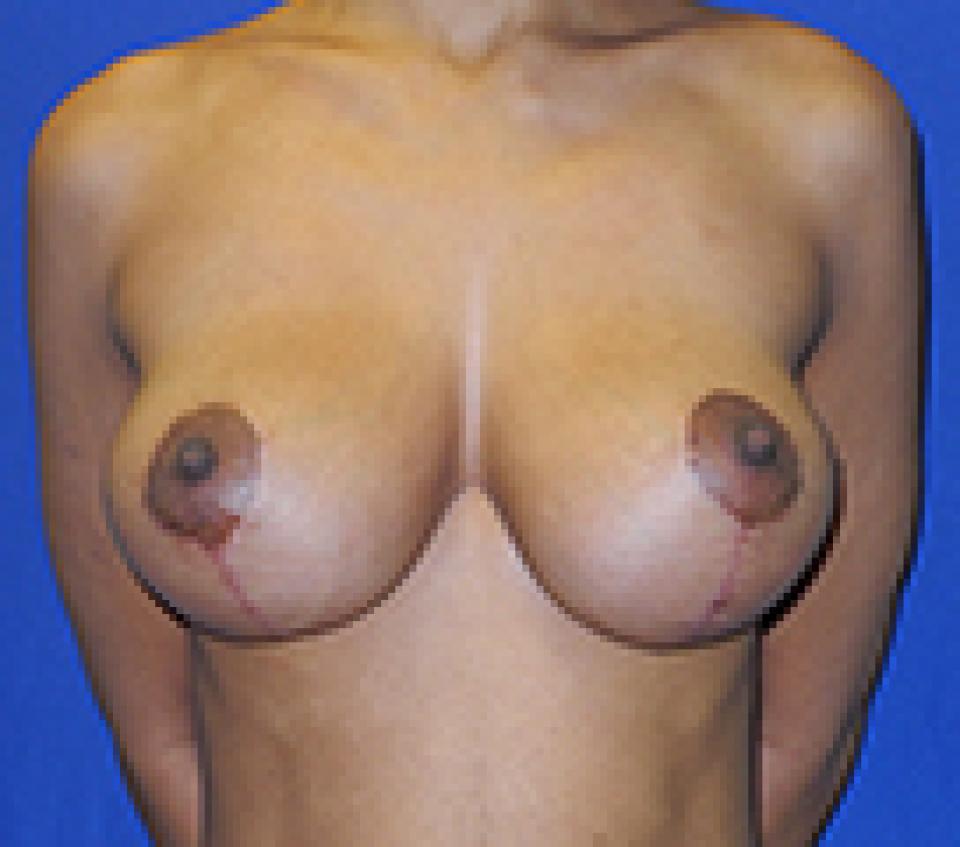 after
after
This 24 year old woman had a breast lift or mastopexy to correct sagging of her breasts that occurred as a result of changes related to pregnancy. I used a short scar breast lift or mastopexy technique which leaves behind scars shaped like a “lollipop.” Some breast lifts or mastopexies are performed using a technique that results in scars that look like an “anchor,” but I prefer to use this shorter scar technique because scars are never visible in the cleavage nor on the side of the body beneath the arm. This makes swimsuit selection much easier.
How the breasts will change as a result of pregnancy varies from one woman to the next. Some women’s breasts look very similar after pregnancy. Others change drastically in their appearance after even a single pregnancy.
This woman was fortunate to have enough breast tissue to rearrange into a relatively full and natural appearing breast without the need for an implant.
Skin elasticity, which refers to the ability of skin to “snap back” after being stretched, also varies from one woman to the next. In people who have poor elasticity, surgical results do not last as long. In such people, using an implant to replace volume can predispose that individual to an earlier recurrence of the initial problem because the implant has weight and taxes already compromised skin. Commercially available skin substitutes can provide the strength needed for successful use of implants in such cases. Use of such substitutes adds expense and complexity to the surgery, however.
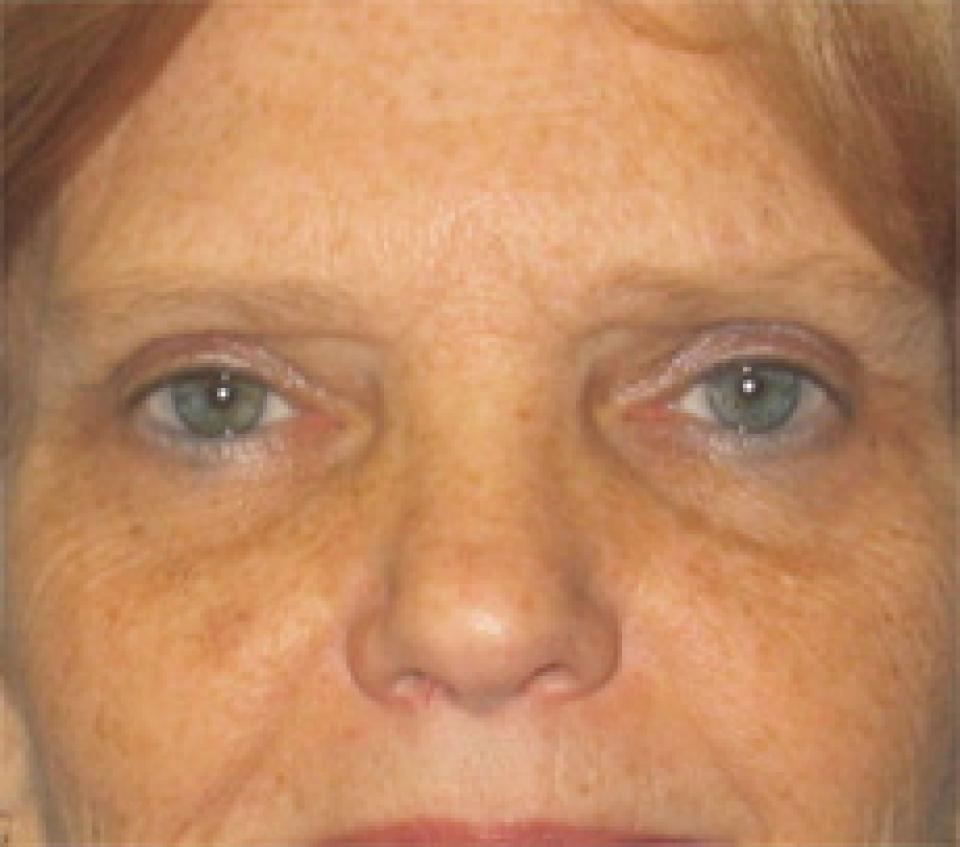 before
before
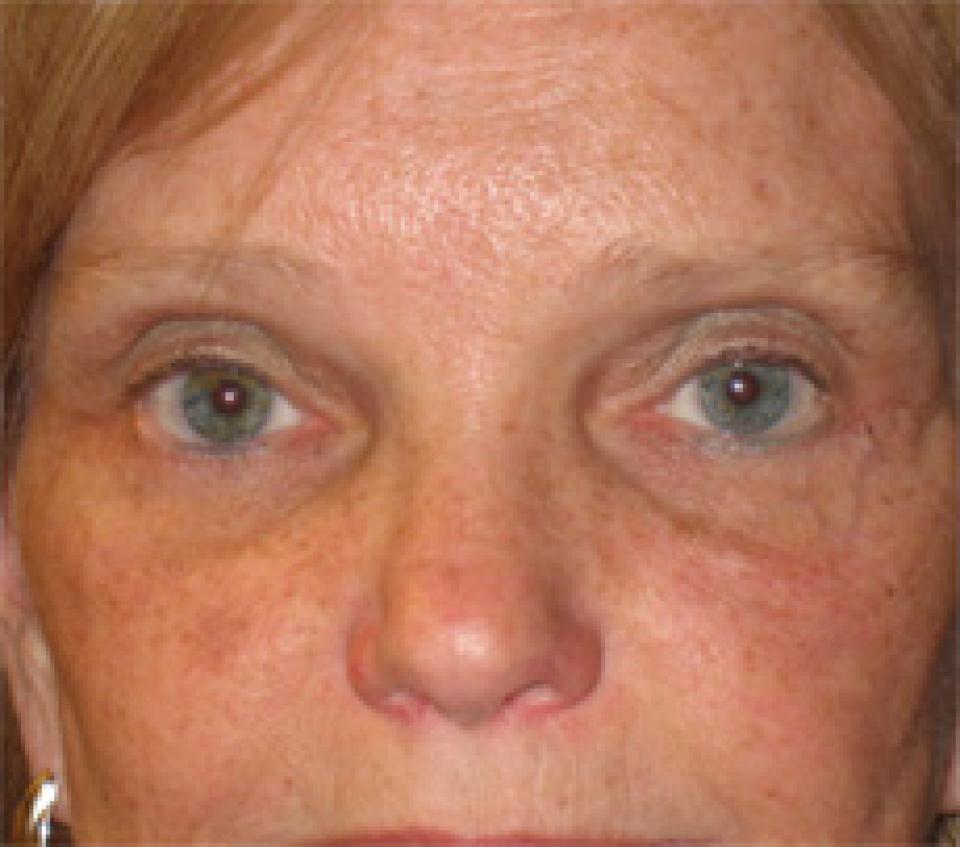 after
after
This case depicts a 56 year old woman who underwent upper and lower eyelid lifts in concert with an endoscopic brow lift. The majority of the heaviness in her upper eyelids was due to descent of her brow, which was addressed by the brow lift. Her post-operative photographs depict her appearance at approximately 4 months after surgery.
In individuals who exhibit sagging of the skin of the brow, a brow lift is necessary to rejuvenate the upper third of the face and to release the heaviness from the upper eyelids. When an upper eyelid lift is performed at the same time as a brow lift, the result can be dramatic and long lasting.
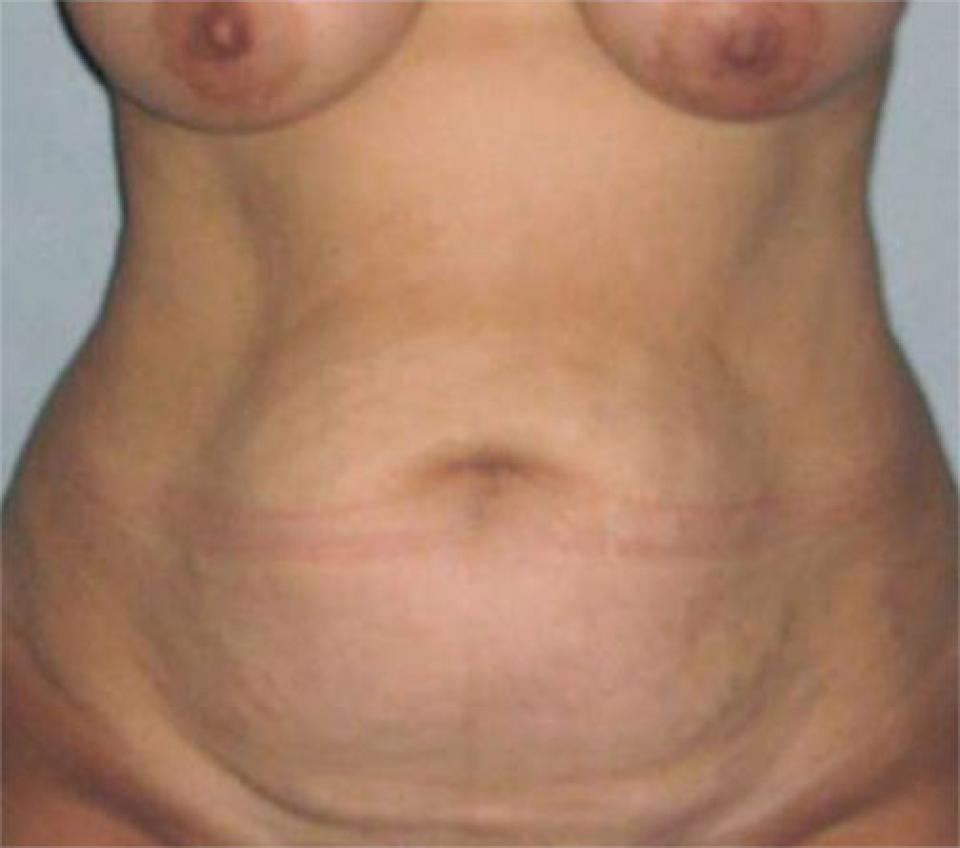 before
before
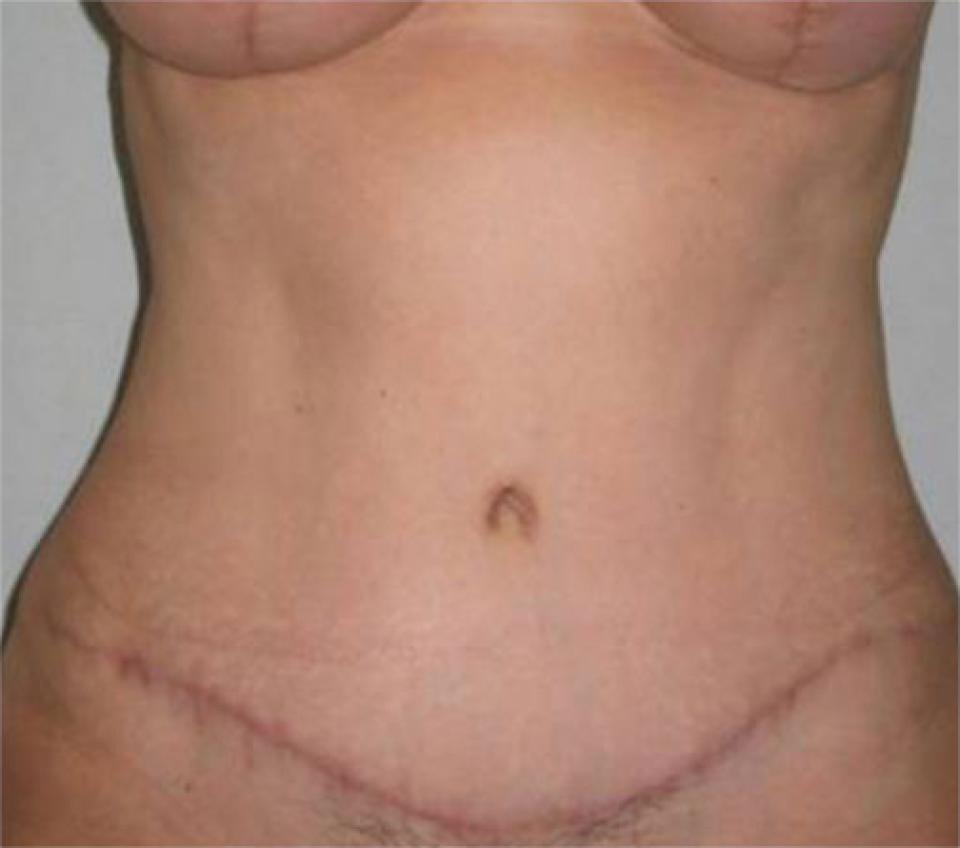 after
after
This case depicts a 51 year old woman who was delivered of two children by c-section. Both her abdominal skin and abdominal wall had been stretched during her pregnancy, giving her abdomen a less taught appearance. These post-partum changes are not typically response to diet or exercise.
Although abdominoplasty incisions can vary in length, a portion can be placed within an existing transverse c-section scar. Often, the entire incision is relatively easy to hide, even when wearing a two piece swimsuit. The post-operative photographs depict this woman's appearance approximately one year after surgery.
 before
before
 after
after
This case depicts a 44 year old woman who had borne four children and was most concerned with excess skin, which was severely affected with stretch marks, on her abdomen. Such individuals are optimal candidates for an abdominoplasty or "tummy tuck." While many of the stretch marks can be removed during this surgery, even those that remain are less noticeable when the skin is taught. An abdominoplasty is also designed to tighten the abdominal musculature, which may also be stretched or malpositioned as a result of pregnancy.
The post-operative photographs depict this woman's appearance approximately one month after surgery.
 before
before
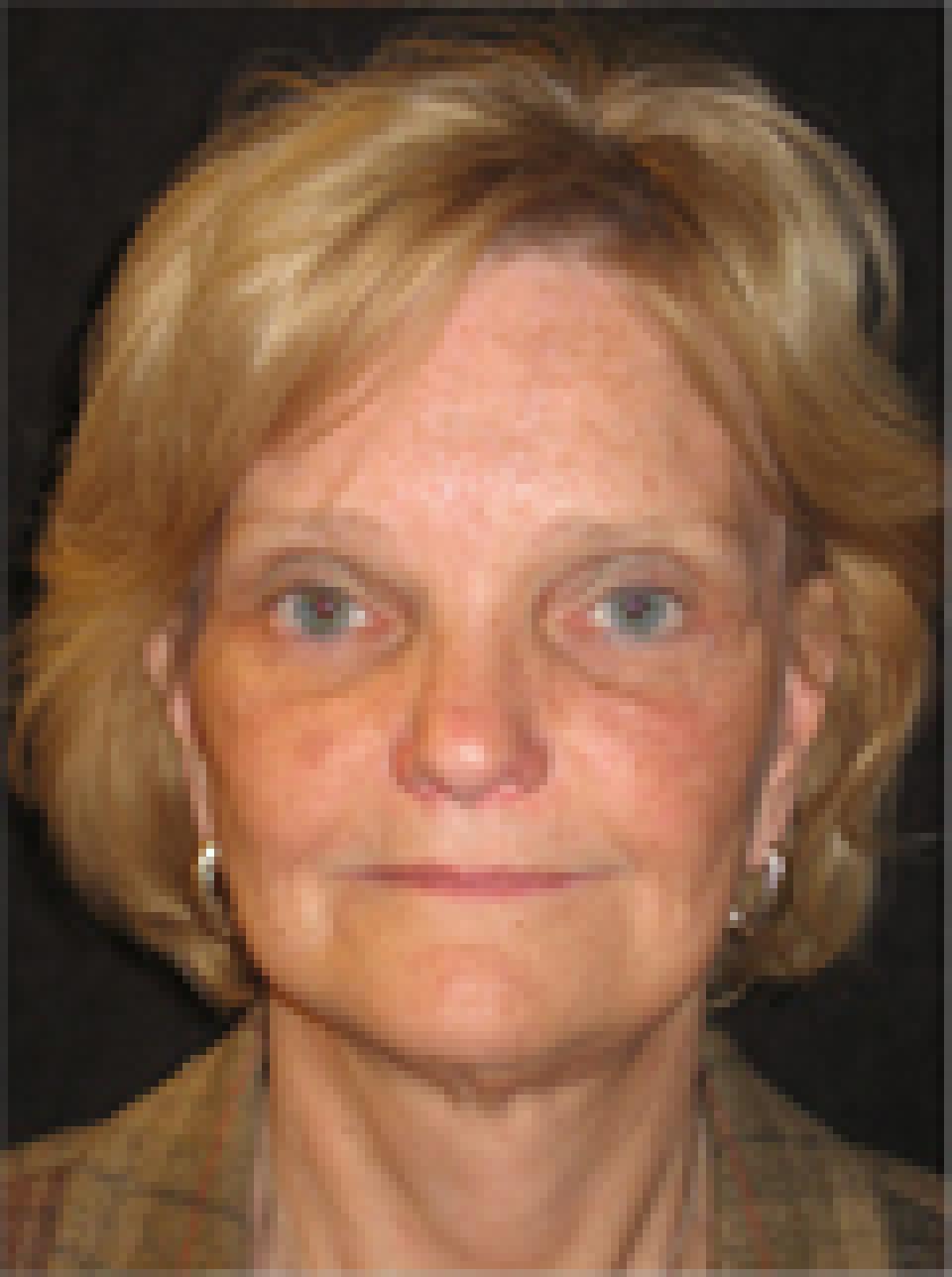 after
after
This case depicts a 56 year old woman who wished to improve the appearance of sagging skin that she had developed as a result of age and dramatic weight loss.
She underwent an endoscopic brow lift, upper and lower eyelid lifts, a short scar face lift and a neck lift. Her post-operative photographs depict her appearance at approximately 4 months after surgery.
Although a properly executed short scar face lift can effect some improvement in the appearance of sagging skin in the neck with no incisions behind the ears, individuals with an extensive amount of skin and muscle descent require longer incisions and a formal neck lift to achieve dramatic results.
Dr. Belsley's Philosophy of Male Breast Reduction
Treatment for gynecomastia can be approached in several ways and is largely dependent upon the “type” of tissue in the chest that needs to be reduced. A physical examination is necessary to create a plan for treatment. Most of the time, I treat these individuals with a combination of ultrasonic liposuction and removal of glandular and breast tissue through a small incision on the border of the areola. Some individuals will be able to achieve excellent results with ultrasonic liposuction alone. Others, may require more extensive incisions. My goal is to give you a natural looking masculine shape that is well proportioned with the rest of your body using the shortest incision possible.
More >>